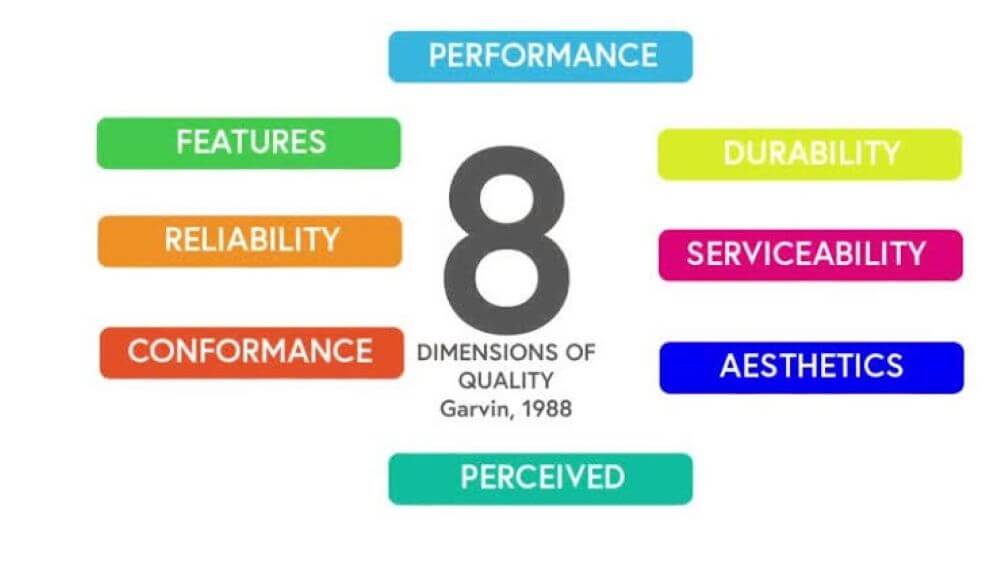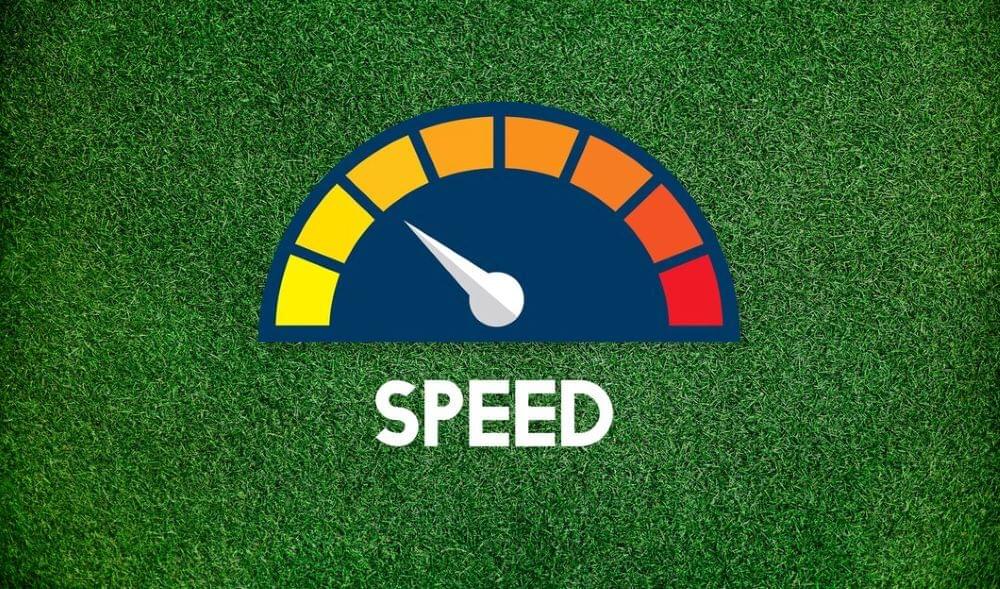
What is the most direct cause of customer loyalty

The most direct cause of customer loyalty is a good product experience which means good UI/UX, optimzied product features and problem solving customer support. You need to keep up with the trends and needs of the market and constantly improve your product. Low quality product service is on of the causes of customer churn.
But is it only the product features that matter for a good product experience? No, there are a lot more factors that make a good product experience.
A good product experience means that using the product feels enjoyable, easy, and fulfilling. It starts with the product itself meeting your expectations and functioning well. Beyond functionality, it involves how the product makes you feel—whether it simplifies your tasks, enhances your life, or brings you joy. A good product experience also includes the entire customer journey from buying it to getting support if needed. It’s about feeling satisfied and happy with your choice, knowing that the product enhances your daily life in meaningful ways.
In this blog, we will discuss the factors that combine to make a good product experience. So, let’s find out the factors that involve in keeping a customer loyal to your branch. Furthermore, we will discuss other factors that also help in customer loyalty.
Client Loyalty is not limited to only customer retention but also about establishing a brand so great that consumers can’t help but return. Figuring out the most direct cause of customer loyalty exactly can be tricky because so many things affect their behavior. But it’s super important because loyal customers usually make up a big portion of a company’s income and are key to spreading the word about the brand.
Let’s also discuss the factors that influence a good product experience.
What is the most direct cause of Customer Loyalty?
The most direct cause of Customer loyalty is a good product experience. A good product experience includes a good UI/UX experience, quality features, fast speed, continuous product improvements, transparent pricing and an excellent customer experience.
What Factors Influence a Good Product Experience
Garvin’s eight dimensions of product quality that are performance, features, reliability, conformance, durability, serviceability, aesthetics, and perceived quality, directly impact customer satisfaction. Having a high-quality product ensures customer satisfaction, which is essential for maintaining loyalty, especially for SaaS industry.
The following factors are crucial for a good product experience:

Related Read: How to win back lost customers
User-Centric Design

UI/UX (User Interface and User Experience) design plays a critical role in building and maintaining customer loyalty by ensuring an intuitive, visually appealing, and seamless product experience. A well-designed UI offers a clean, engaging, and user-friendly interface, which helps users quickly understand and navigate the product without friction. When users feel comfortable and confident interacting with the product, it promotes trust and satisfaction, key factors in fostering loyalty.
Good UX, on the other hand, focuses on crafting an overall experience that aligns with users’ needs, reducing pain points, and delivering value efficiently. A streamlined, enjoyable user journey encourages repeat use, making customers more likely to stick with the product. Additionally, thoughtful UX can incorporate personalized experiences, helping users feel understood and appreciated. When users consistently have positive experiences—whether through ease of use, problem-solving capabilities, or emotional connection—they are more likely to become long-term, loyal customers who advocate for the product.
Feature Set and Customization
The feature set of a product defines its core functionalities and capabilities, shaping the initial user experience by addressing specific needs and solving problems. A well-thought-out feature set prioritizes essential functions that align with user expectations while providing competitive differentiation. However, bombarding users with too many unnecessary features can overwhelm and confuse them, so finding a balance between simplicity and functionality is critical. It’s equally important to evolve these features based on ongoing user feedback and changing market demands to keep the product relevant.
Optimization, on the other hand, focuses on refining the product to ensure smooth performance, ease of use, and long-term user satisfaction. This includes speeding up loading times, improving navigation flows, fixing bugs, and ensuring scalability across devices. The goal of optimization is to remove friction from the user experience, making it feel intuitive and fluid. By continuously improving design, functionality, and personalizing the experience based on user behavior, products can remain fast, reliable, and enjoyable in the long run. Together, a strong feature set paired with ongoing optimization ensures a product not only attracts users but retains them by providing seamless and valuable experiences.
Having solid features to your product is the main thing to good product experience. As long as you have a bug-free tool, your customers will appreciate your product and will not leave you until you give them a reason. We will cover those reasons in the next points. But let’s first discuss how do you build a solid feature set.
The best way to build a product with complete feature set is via a survey. Do the survey, ask what people need, implement it along with what your competitors are doing.
When you have the combination of great features along with little advancements that users want, your product will be top-notch.
Next thing is to keep it bug free. This point relates to the next part of causes which is customer support. You need to listen to complaints, infact get feedback from your customers regarding your product on and off and see if everything’s working alright. Try to solve the issues and bugs on priority to keep your customers loyal.
Next thing, Integrations. Imaging you have everything good but your product doesnt support or integrate with other tools.
What good is that?
Simplify the process for your users and give them the facility of maximum integrations.
Performance

The performance of a product determines your product quality. A great SaaS product must ensure that everything runs smoothly and quickly. Fast load times and responsiveness of the product helps user stay productive and focused.
A variety of factors contribute to performance, including back-end infrastructure, front-end design, and resource management. This ranges from optimizing the code to reduce processing time to compressing media files for quicker load times. Efficient resource usage—such as lower battery consumption on mobile devices or minimized memory usage on web applications—keeps the experience light and fluid. Regular audits and performance testing, along with improvements like caching, server-side optimization, and minimizing scripts, help ensure the product remains responsive as it scales. Ultimately, optimized performance is not only about speed but also about delivering a consistent, stable experience, which makes the product more reliable and enjoyable for users over time.
Scalability is also important, meaning your service can handle more users and data as users grow without slowing down.
Continuous Product Improvement

You need to keep up with new trends and technology and evolve likewise. Regular updates mean the product constantly gets better, adding new features and enhancing existing ones. By actively collecting and incorporating customer feedback through cancel flow, you can make sure your product stays aligned with what user need and want. This commitment to improvement shows that the product is not static but grows with the customer.
You also need to keep up with latest trends and technologies, like introducting AI based features to your product in 2024. For a content or social media software, you can add features that give AI generated captions.
Professional and Easy Onboarding

Easy and professional onboarding helps build customer loyalty by making a great first impression and ensuring customers feel supported from the start. When customers find it simple to get started with your product or service, they are more likely to have a positive experience and feel confident using it.
Professional onboarding, which includes clear instructions, helpful resources, and responsive support, shows customers that you care about their success. This creates a strong foundation of trust and satisfaction, making them more likely to stick with your brand and continue using your offerings in the long term.
Offering training resources and in-app guides further simplifies the onboarding process. Training resources include detailed guides, helpful FAQs and video tutorials. You can also include personalized training sessions for your new-in customers. Training sessions increase the trust of customer in your product as they allow them ask questions and take advice. These sessions might also interest users in upgraded features of the product as you give them deeper insights of the product.
Along with this, In-app guides and tours are particularly useful for new features and updates navigation. Integrating them at the right time when user needs it with timely tips and tricks will help your product grow and enhance natural learning of product.
Pricing
Pricing plays a big role in customer loyalty by affecting how customers see the value and affordability of your product or service. When customers think they’re getting good quality for a fair price, they’re more likely to stay loyal.
Affordable prices make your product accessible to more people, encouraging them to keep buying from you instead of looking elsewhere. Transparent and clear pricing builds trust, as customers appreciate not being surprised by hidden fees.
Keeping prices stable also helps build trust, as customers can plan their budgets without worrying about sudden increases. Offering discounts, promotions, and loyalty rewards makes customers feel valued and encourages repeat purchases. It’s great to have:
Flexible pricing options: like different plans or pay-as-you-go models, cater to various needs and budgets, helping to retain customers.
Fair and transparent prices: No hidden charges and fees at checkout. Customers should know how much they will pay. It’s best to have a pricing calculator for your product.
Customer service

As evidenced by studies showing that 83% of customers cite trust as a primary reason for their brand loyalty. Well, they are right because ultimately once the user has signed up to your services, they need good customer service. No one in the world would keep using a product if the customer support is pathetic right? You customer service can either make a client or break a client. That is why you need to invest in an active customer support.
Here’s an example:
Scenerio: When GlobalLogistics had a major system crash right before a big client presentation, Lena (TechSync customer support) managed to get everything back online within hours.
James at GlobalLogistics was very impressed as he quoted “Lena is a lifesaver Honestly, she is one of the main reasons we have been with TechSync for this long. “
Also him:
“Look, Lena’s been fantastic, but at the end of the day, we also need a product that evolves with our business. If the software doesn’t keep up with our demands, even the best customer service won’t stop us from exploring other options.”
This scenario shows that while customer service is known to be the most direct cause of customer loyalty, it still isn’t it.
You need to build a good product experience overall to gain customer loyalty. And a good customer service is a part of it, not the whole of it.
Make sure you have a friendly and helpful service, making customers feel good about your brand. Excellent service builds trust because customers know they can rely on your team to address their concerns and solve their problems. Also ensure that your service is quick in responding as well as in resolving their issues. On top of it, having a personalized service will create a deep connection with your customers.
So keep doing that, along with other factors that contribute to a good product experience and you are most likely to retain clients.
Avoid These Common Pitfalls
- Overlooking Customer Needs
One of the biggest pitfalls businesses can fall into is failing to accurately understand and prioritize customer needs. When companies are too focused on their own vision, technological advancements, or expanding a product’s features without considering the pain points and desires of their customers, they risk creating an offering that doesn’t truly solve the problems their customers face. This can lead to customer dissatisfaction, lower engagement, and ultimately, high churn rates. Successful businesses take a customer-centric approach, continuously exploring and identifying what their audience wants and needs through market research, user feedback, and data analysis. By aligning product development and services with real customer needs, companies can ensure they provide valuable solutions that attract and retain loyal users.
- Ignoring Customer Feedback
Customer feedback is a goldmine of actionable insights, yet many businesses make the critical error of either ignoring it or not dedicating enough resources to collecting and analyzing it. Dismissing feedback leaves companies disconnected from their users’ evolving expectations, issues, and suggestions. Whether through surveys, reviews, or customer support channels, feedback provides a direct window into how users experience the product or service. Ignoring these insights not only alienates customers—who feel undervalued—but also allows small issues to snowball into major problems that can negatively affect the brand. Companies that actively listen, respond, and iterate based on what customers are saying are far more likely to build strong relationships, enhance product-market fit, and foster long-term loyalty.
- Failing to Reward Loyalty
Neglecting loyal customers is another common mistake companies make. It’s tempting to focus efforts mainly on acquiring new customers, but rewarding existing ones is key to fostering long-term relationships. Loyal customers often invest more time, money, and emotional equity into a brand, and failing to acknowledge their support can leave them feeling underappreciated. A well-crafted loyalty program, personalized offers, early access to new products, or exclusive content can make customers feel valued and special. Not providing such incentives or recognition can lead loyal customers to feel taken for granted and look for alternatives. Effective businesses understand the value of retention and ensure that loyalty is reciprocated, boosting customer lifetime value and positive word-of-mouth referrals.
Final Thoughts
Securing customer loyalty can be challenging, but having loyal customers is incredibly rewarding. Businesses can improve their customer loyalty strategies by using the helpful resources and insights on Churnfree’s blog. These resources help companies understand and manage customer behavior, helping them winback customers. Here are some additional guides that you might be interested in:
📜 Customer Retention Strategies
📜 Churn rate vs Retention rate
📜 Is net sales the same as revenue
FAQs
- What is the main cause of customer loyalty?
The main cause of customer loyalty is consistently meeting customer’s expectations and good product experience. This includes high-quality products, excellent customer service, and rewarding loyalty programs. Trust and reliability make customers feel valued and confident in their choice. When customers feel understood and appreciated, they keep coming back.
- What is the biggest driver of customer loyalty?
The biggest driver of customer loyalty is consistently providing a great customer experience, which includes friendly service, reliable products, and personalized touches. Making things easy and offering good value also play big roles. Handling problems well and having good rewards programs can boost loyalty even more.
- What is the most direct cause of customer loyalty in the food industry?
The most direct cause of customer loyalty in the food industry is consistently delivering high-quality, delicious food. This core factor is complemented by excellent customer service, a pleasant dining environment, and value for money.


